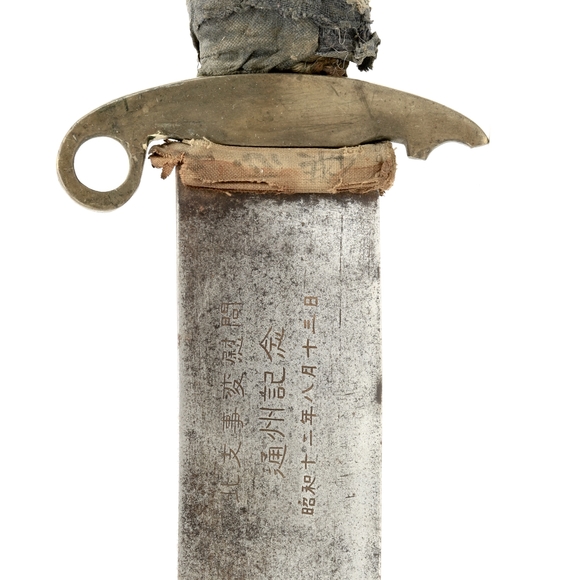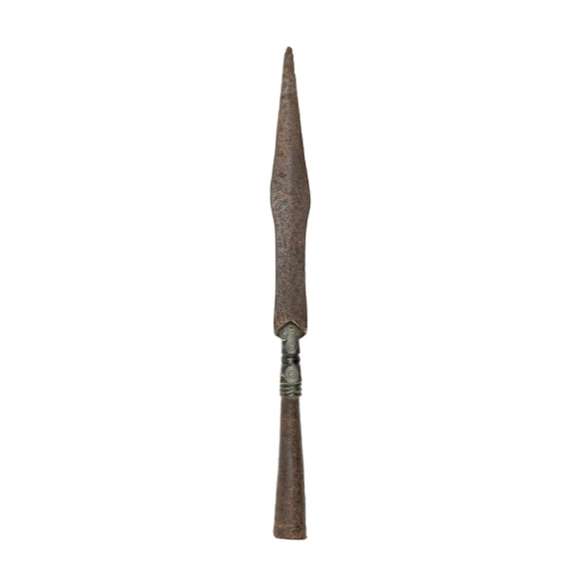Language: Mandarin Chinese
Source: Classical literature
Description
Dāo cáo (刀槽) literally means "saber groove", the grooves found on many Chinese saber blades. Such grooves are often erroneously called "blood grooves", but their real purpose is to improve on the saber's handling characteristics by reducing weight in certain areas while retaining much stiffness.
 Gooves on a 17th century Chinese saber.
Gooves on a 17th century Chinese saber.
The use of grooves also provided the bladesmith with an opportunity to add complexity to the aesthetics of the saber blade. At the height of Chinese saber making in the late Ming to mid-Qing dynasty, we see great variety in the combination of grooves, bevels, and dimples used for this purpose.
Chinese bladesmiths took much inspiration from the sabers of the steppe, as well as Japanese, Persian, and Indian design features.
For a complete overview of saber terminology, see: A Chinese saber glossary.
In Manchu, the word is kuhen.

Classic configuration of saber grooves on a 17th century Chinese saber.

Double grooves, dimples and long backedge on a mid-Qing dynasty saber.

A configuration featuring segmented grooves on an 18th century Chinese saber.

Japanese naginata-inspired grooves on a 17th - early 18th century Chinese saber.

Persian inspired U-turn grooves on a 17th century Chinese saber.

Triple grooves featuring a U-turn at the forte, combined with a long back bevel on an 18th century presentation saber.
References
1. Tongwen Guanghui Quanshu (同文廣彙全書) or "Enlarged and complete dictionary" of 1702. A Qing imperial dictionary in Chinese and Manchu, each entry double-checked and approved by the Kangxi emperor.






